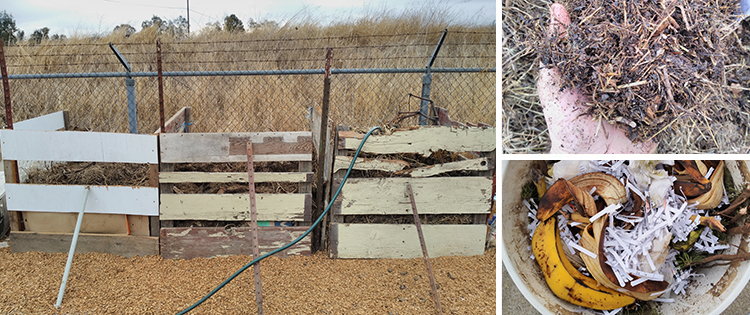Compost can be made a lot of different ways. Intensive compost systems that rely on specific recipes of materials and consistent turning can make hot compost in a matter of weeks. Cold composting can be done by just piling all the compost materials together and letting nature do its work for a year or two.
The compost I am recommending today is a mix of the two. I use it myself and I like to call it ‘Homestead Recycling Compost’. I use a variety of materials and rely on both hot and cold composting to make a soil amendment that improves my garden health and yield over time.
Homestead Recycling Compost Materials
Here is a list of the various materials that make up the majority of my compost piles. There isn’t an exact science to how much of each to add. Remember, this compost will vary between hot and cold composting over time.
Food Waste From Household
A mix of food waste and paper material is the perfect compost mix.
Food waste that can’t be fed to the livestock should be composted. You can feed chickens a lot of the food waste from the household, but some things aren’t healthy for chickens, or other animals. In that case, it’s great for composting.
For example in my household, I have banana peels and avocado seeds and peels a lot. These are good sources of nitrogen for the compost pile. Just try to avoid animal-based foods as they will typically attract pests.
Paper/Cardboard From Household
To balance out the nitrogen-rich materials gathered in the house, you can shred your junk mail and cut up all paperboard and cardboard from food packaging or shipped packages. They are perfect sources of carbon for the compost pile.
They shouldn’t be your only source though. They don’t contain the nutrients found in wood chips, leaves, and nutshells.
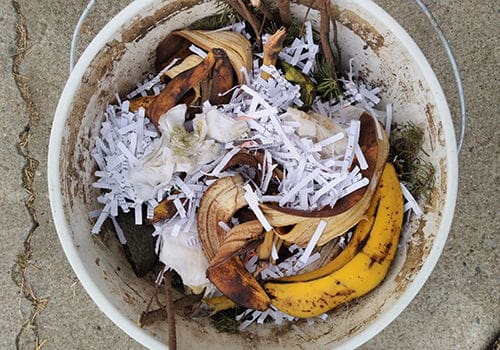
Deep Litter From Livestock
Deep litter may be the best way to keep your livestock healthy when they are in permanent pens. It works for pigs, chickens, and even larger ruminant animals, like cattle.
On my homestead, I put down a thick layer of almond shells but you can use wood chips or leaves. Nutshells and wood chips won’t have to be changed more than once or twice a year but leaves will compost in place much faster.
This deep litter is rich in carbon and absorbs the nitrogen-rich manure of the livestock, creating a perfect mix for compost. When you change it out, put it in the compost pile to finish the process. You’ll notice that it does compost in place a bit but doesn’t quite finish all the way.
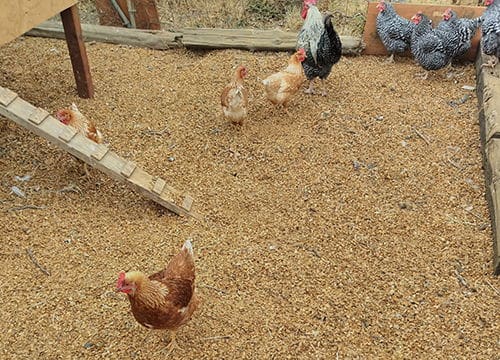
Leaves & Grass Clippings
If you aren’t throwing your leaves and grass clippings in livestock pens for bedding, you can throw them right into the compost pile.
Grass clippings are rich in nitrogen, so if you have excess carbon material for your deep litter like I do, you can mix some in the grass to balance it out.
Or if you have bulk carbon material, mix it in all nitrogen-rich materials.
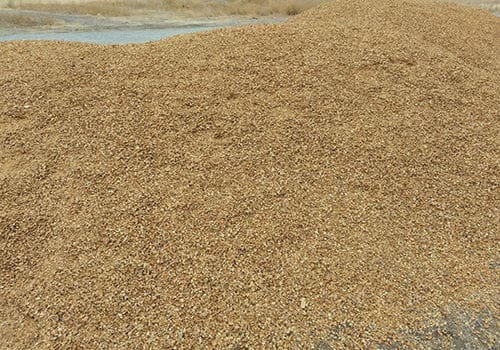
Garden Waste
Exhausted garden plants can be thrown directly into the compost bin. Don’t worry about cutting them up. The spaced-out nature of garden plants will create useful air pockets in the compost pile when it gets heavy from materials continually piled on.
Garden waste is typically the right ratio of carbon to nitrogen by itself, so you won’t have to worry about balancing it out.
These Squash vines will create air pockets to allow for better composting.
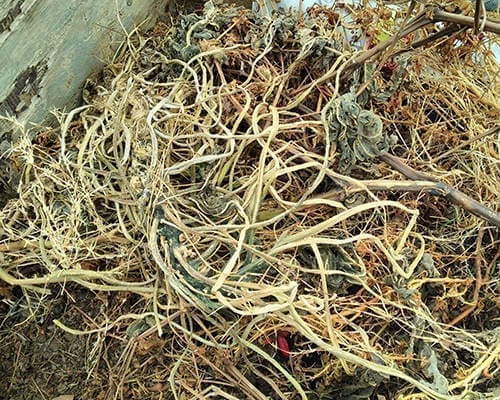
Putting It All Together
I simply pile on material into the bin as I get them. I don’t stress over optimal carbon to nitrogen ratios because I’m not in a hurry to make the fastest compost possible. There are always 10 more things that need to be done on the homestead, so I believe your compost pile should be low maintenance!
This deep litter was a base of leaves and now it’s unrecognizable.
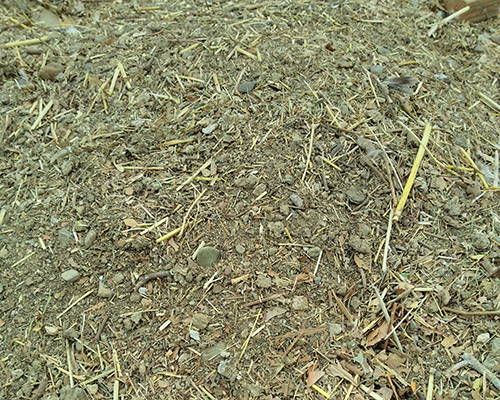
Why Make Compost This Way?
It may seem like a random assortment of stuff that will slow down the comparing process. It might even lead to some parts of the pile finishing before others. I don’t worry about this, because the quality of the finished compost is very high.
All of the different ingredients bring a myriad of nutrients to my compost, making it a rich amendment that will improve my soil quality.
You might get faster compost with fewer ingredients and more attention to the C:N ratio, but you will be limited to the nutrients that those ingredients bring. Horse manure and straw can make compost quick, but the only the nutrients that the manure and straw have will make it in the pile, meaning it could end up being deficient in one or more nutrients.
Variety tends to be better, even if it takes longer. The Homestead Recycling Compost acts as an amendment and a fertilizer for all necessary nutrients.
This method also handles waste from major sources on the homestead instead of sending it off the landfills. Household waste, livestock manure, and general landscaping waste get recycling into compost that improves the quality of your soil each time you apply it!
The 3-Bin System
You can make this compost in tumblers, bins, or just piles. I choose to make it in a 3 bin system because it can hold a lot of material and keep it all in one place.
Each bin should be at least a cubic yard in size, as this is the size needed for a compost pile to heat up.
The first bin is my fill-as-I-go bin and once it gets full, I’ll flip each pile into the next bin until I reach the end. When your compost reaches the 3rd bin, I sort it. Finished compost gets removed and unfinished materials go back in the first bin to continue composting.
I water the piles to keep them moist every so often as well.
When I flip the piles and water them down, they’ll heat up and destroy any weed seeds and pathogens. Then, the piles will cool down and continue with cold composting.
My 3 bin system built from scrap wood. Functionality doesn’t require spending money.
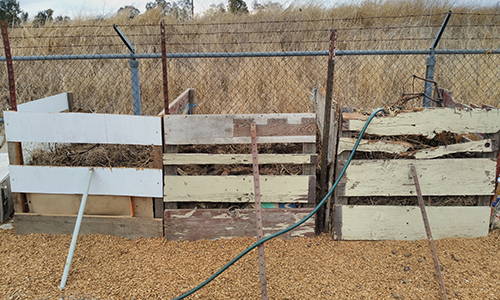
How Long Does This Compost Take To Make?
Since I don’t flip the piles as often as needed to keep the piles hot all the time, they revert to cold composting after a while. This increases the duration needed to create finished compost.
Somewhere around 6-12 months is typical for a finished compost of this style.
But, I’m not in a hurry to finish this compost. It ends up being rich and I have plenty to amend my soil in the garden when needed. I only apply it once or twice a year. Over time your soil quality will improve drastically!
This compost has been in a pile for a few months and may have a few months to go.
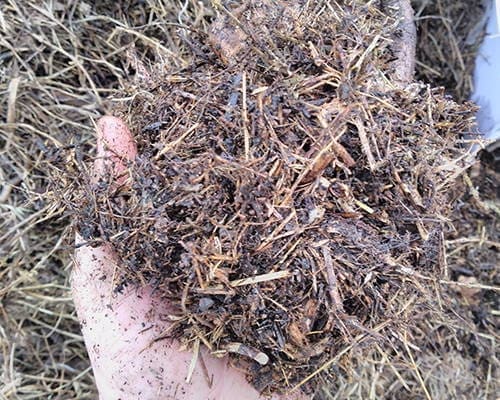
Put More Into Composting
Don’t let the fact that compost takes a while to finish make you procrastinate. 6 months to a year from now, you’ll have a high-quality amendment, made from free waste products. No more buying soil and fertilizer at the nursery! Make your homestead more self-sufficient with composting.
You may also like:
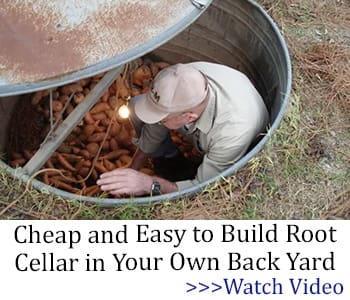 How To Organize Your Garden For Maximum Harvest
How To Organize Your Garden For Maximum Harvest
100+ Long Lasting Foods that Can be Stored Without Refrigeration (Video)
Backyard Projects That Might Get You Arrested
What Foods Can You Bury Underground For Winter?
How To Make A Mini Root Cellar In Your Backyard In Less Than Two Hours
